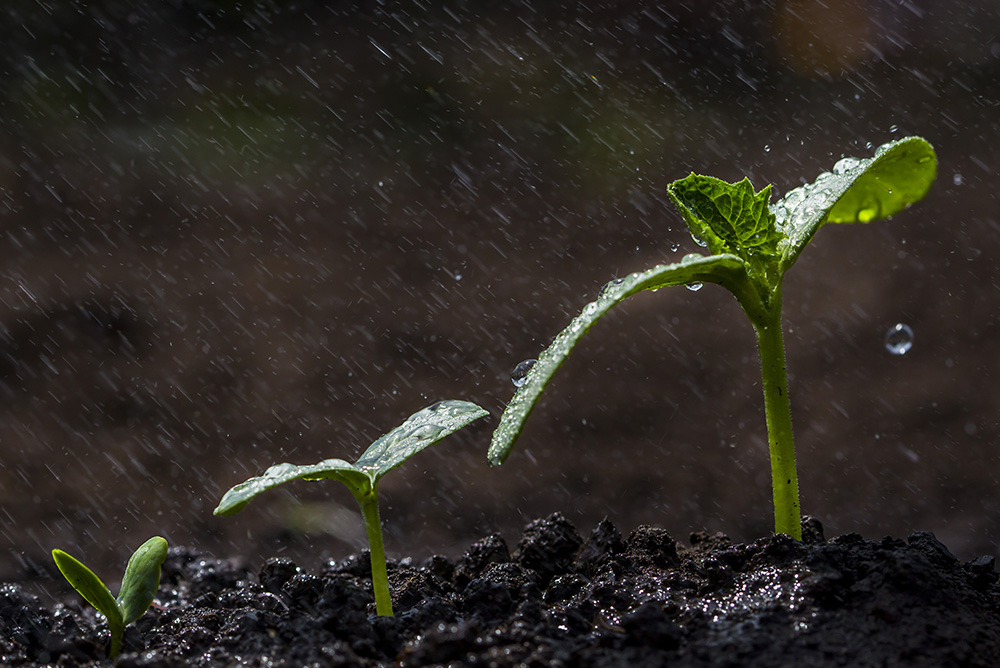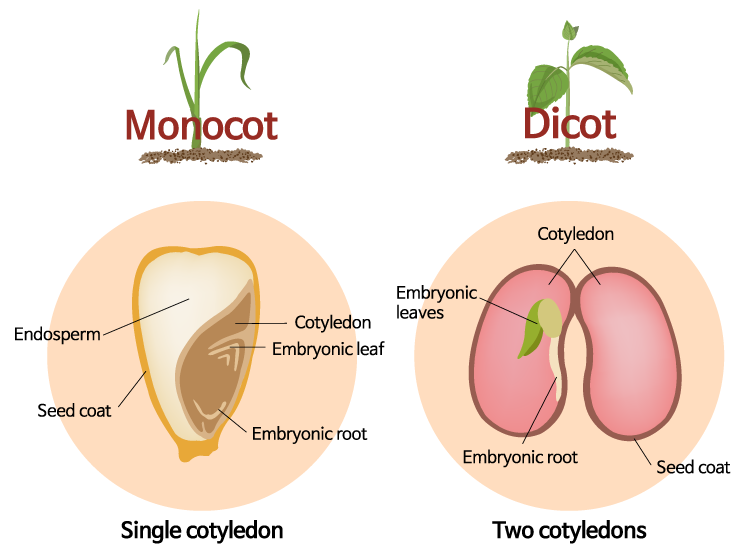
How nutritional seed dressings aid in germination and early seedling development
From the moment a seed begins to germinate, it will be seeking nutrients required to fuel its growth and development. Fortunately, the seed has packed a small lunch: in the form of nutritional requirements wrapped in the seed coat. However, a young and rapidly growing plant often hungers for more. Choosing the right seed dressing can tide the plant over until it is better able to gather nutrients and water on its own. Not to mention, it can help provide protection at a particularly vulnerable time.
Germination Step 1: Imbibition
Ample moisture and a minimum soil temperature necessary to soften the seed coat, which will swell as it becomes hydrated. Most starchy seeds (monocots such as corn) need a minimum moisture content of approximately 30%, while most oily seeds (dicots such as beans) need a 50% minimum moisture content to begin germination. Oxygen is also an important factor. Wet or soggy soils may not contain enough oxygen for germination to begin. Seeds planted in these conditions will absorb water quickly and have a tendency to decay.
A high-quality seed dressing will help protect the seed against a number of early stressors, such as drought or excessive moisture.
Germination Step 2: Interim (or Lag) Phase
At this point, the seed’s internal growth processes are activated. Cell respiration begins and the seed starts to manufacture proteins. To achieve all of this activity, the seed will start to metabolize the nutrients stored within the seed coat during dormancy. Lipids and carbohydrates are broken down into simple sugars and translocated to other parts of the plant where they are required to create energy and produce proteins.
Seed dressings can supplement these stored nutrients to further enhance seed vigour. They can also accelerate the germination and emergence process, which is particularly important in a shortened season where seeding is delayed.
Germination Step 3: Radicle & Root Emergence Phase
Once the cells begin to elongate and divide, the embryo grows and breaks through the seed coat. The plant begins to emerge, starting with the radicle (primary root). This will help anchor the plant. The radicle will develop lateral roots, which will begin to source moisture and nutrients within the soil.
Most nutritional seed dressings will include a ready supply of phosphorus, which is central to root development, protein synthesis and energy functions. This is highly advantageous since phosphorus is immobile in the soil – and is thus very hard for the immature root system to access. The faster and more efficiently the roots develop, the healthier and better able the plant will be to withstand drought and ward off pests and disease.
Some of the more advanced dressings will promote healthy relationships within the rhizosphere (the area immediately surrounding the roots), contributing to defence mechanisms and the absorption of nutrients. Zeatin is a cytokinin that is found in some dressings that can help promote shoot growth, resulting in higher rates of germination.
Seed Dressings and Early Seedling Development
Sprouting will vary, depending on whether the plant is a monocot (have one seed cotyledon) or dicot (two seed cotyledons). Cereals and grasses are monocots, while canola, soybeans, beans, sunflowers, peas, potatoes and most temperate fruits and veggies are dicots.
With monocots, as the roots absorb water the shoot will sprout upwards until it breaks the surface. The seedling leaf is covered in a protective sheath known as a coleoptile. Only the top portion of the plant (above the cotyledon) emerges. The cotyledon remains below the surface where it will decompose. Monocots have a harder seed coat that doesn’t split but stays in one place.
Dicots can emerge one of two ways. In the first (epigeal germination – above ground), the section below the cotyledon extends and forms a hook which pulls the stem and cotyledons to the surface. Oilseeds and beans emerge in this manner. Peas and cereals emerge through hypogeal germination (below ground): a process where only the section above the cotyledon emerges (similar to monocots). Dicots have seed coats that soften with moisture and split.
At the seedling stage, the plant will benefit from the additional nutrients available through the seed dressing. Again, dressings that promote root growth will be invaluable. Some coatings will even increase xylem pressure and elasticity, which improves the translocation and protect against water loss. Others will inhibit free radicals and ethylene, which can cause wilting in drought conditions.
Always Ask About Nutritional Seed Dressings
Nutritional seed dressings can vary greatly in terms of their composition and makeup. When purchasing seed, be sure to inquire about the dressing options and the advantages of each. At the minimum, choose a dressing that is high in phosphorus to enhance root growth. Also, look for a dressing that will protect the seed against stressors such as less than ideal weather conditions. While it is crucial to choose high-quality seed, picking the right seed treatment will play a key role in getting your crop off to a healthy start.


